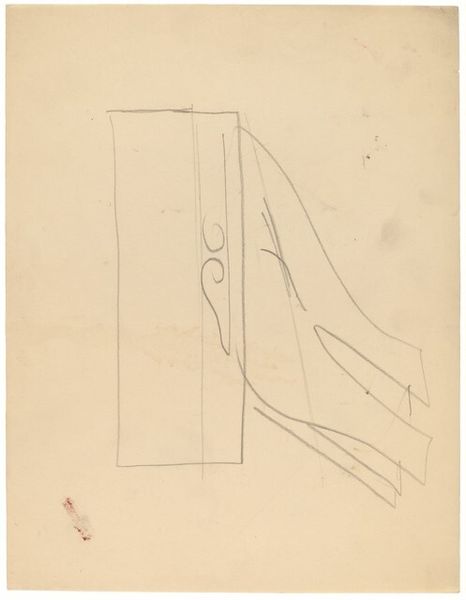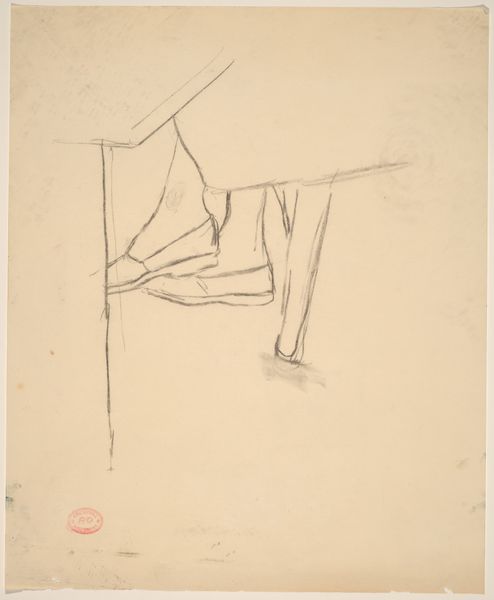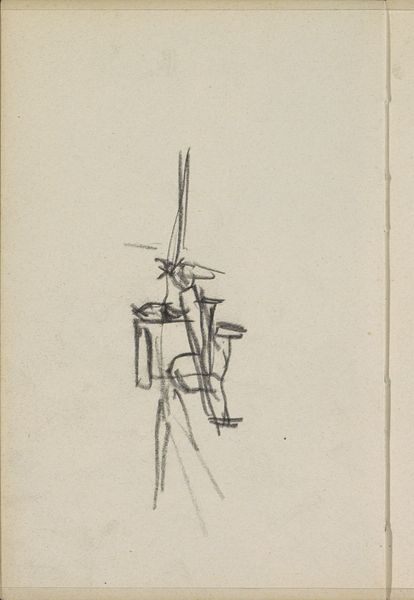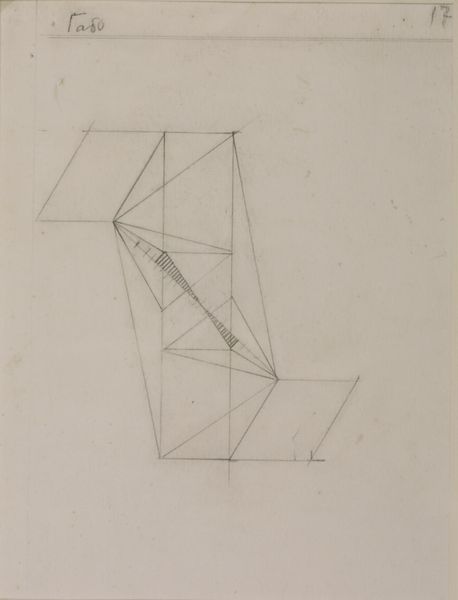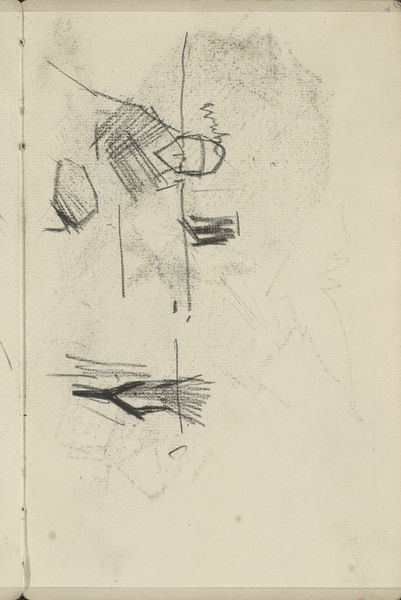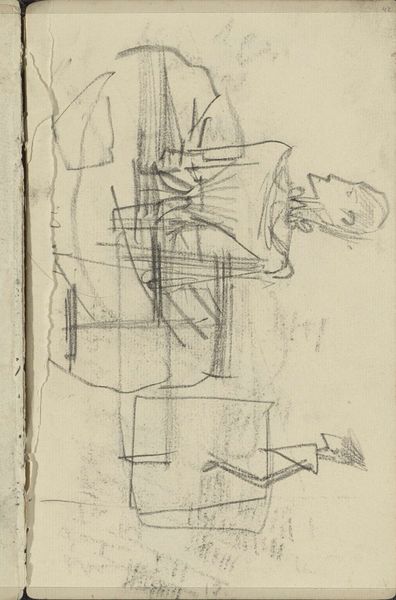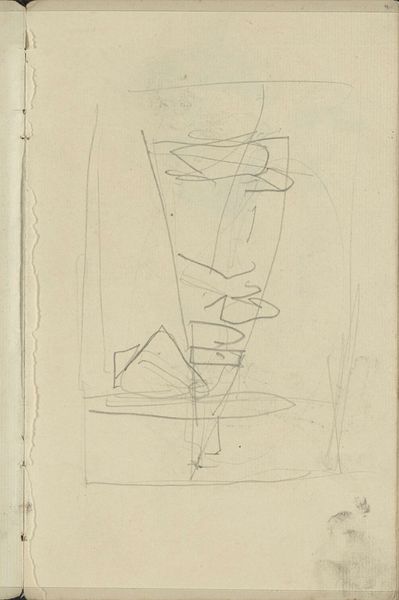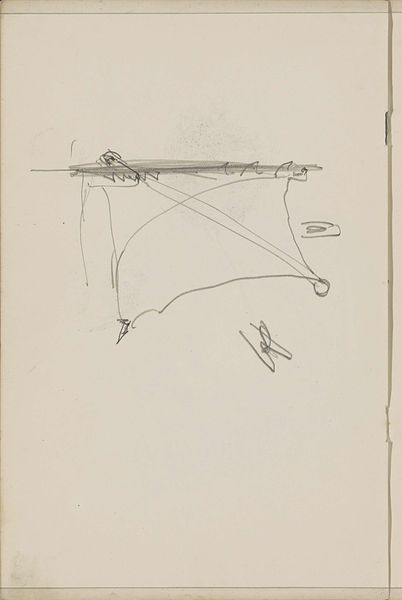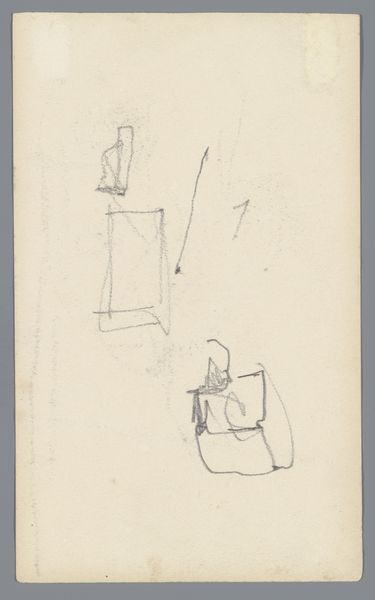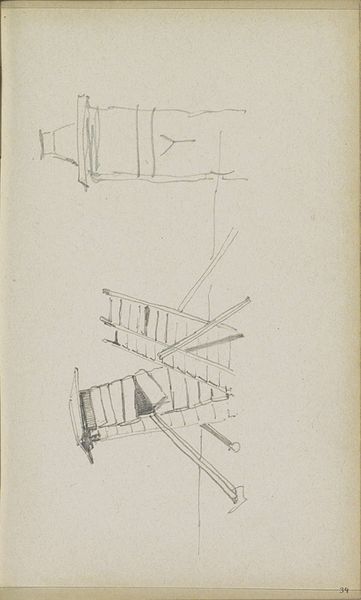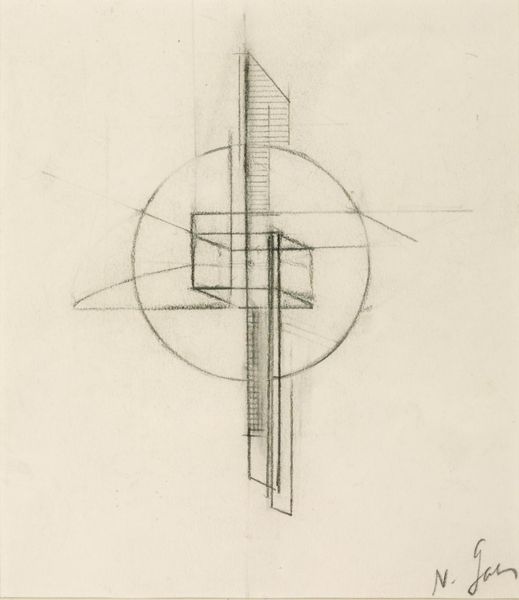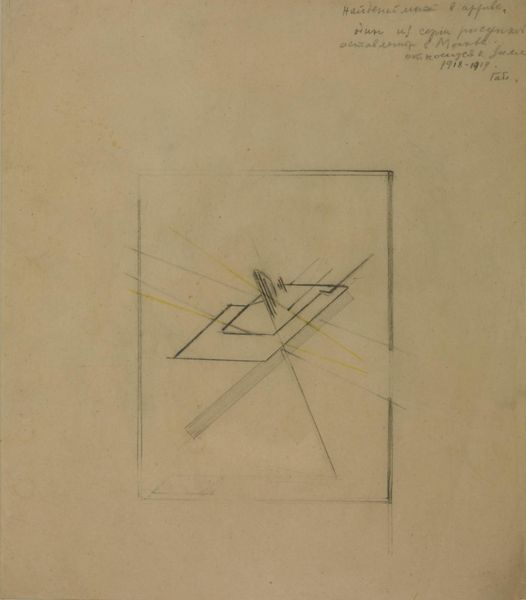
Dimensions: support: 330 x 229 mm
Copyright: The Work of Naum Gabo © Nina & Graham Williams/Tate, London 2014 | CC-BY-NC-ND 4.0 DEED, Photo: Tate
Editor: This is Naum Gabo's "First Sketch for a Monument for an Institute of Physics and Mathematics." It's just a pencil sketch, but the forms are so suggestive. What symbols do you see at play here? Curator: The circle is an ancient symbol of wholeness, of the infinite, so to see it combined with the angles and straight lines...are we witnessing a reconciliation between the rational and the intuitive? The planned and the emergent? Editor: That's a great point! It feels like a bridge between science and art. Curator: Precisely, and how those shapes interact can tell us what the artist valued about both disciplines. What feeling do you get from the angles and straight lines? Editor: Stability, maybe? Directness? It makes me wonder if Gabo saw science as this structured endeavor. Curator: Or perhaps he’s exploring how structure facilitates discovery? The sketch becomes a meditation on how we come to know. Editor: I never thought about it that way. It's amazing how much meaning can be packed into a few lines. Curator: Indeed. Gabo invites us to reflect on the dialogue between different modes of understanding.
Comments
tate 6 months ago
⋮
http://www.tate.org.uk/art/artworks/gabo-first-sketch-for-a-monument-for-an-institute-of-physics-and-mathematics-t02156
Join the conversation
Join millions of artists and users on Artera today and experience the ultimate creative platform.
tate 6 months ago
⋮
These sketches are for works both realised and unrealised. Sketch (1917) is reminiscent of several reliefs made in the 1920s, and has been compared to Gabo's 1925 Model for 'Rotating Fountain' (on display here). Sketch (1918-19) is for a relief that would have been composed of intersecting planes protruding from a wall or reaching across a corner. Gabo's aim to make a public art that could play a role in the new society promised by the Russian Revolution is reflected by First Sketch for a Monument¿(1919) Sketch for a Kinetic Construction (1922) demonstrates his radical introduction of real movement to articulate space. Gallery label, August 2004
